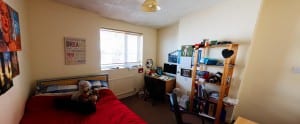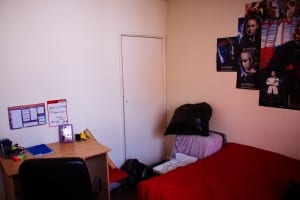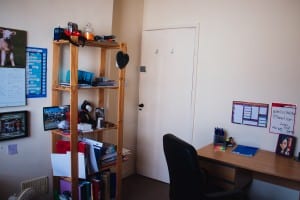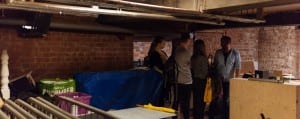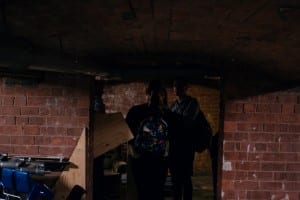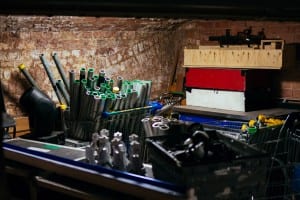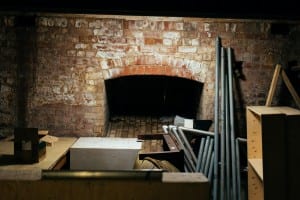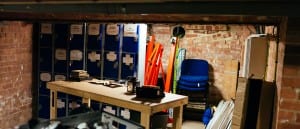Friday 28th October
Spare Bedroom
After finding difficulties with the space that Drill Hall offered us, we wanted to find another location that would be more suitable and preferable to shoot the film. Luckily, Hannah has a spare bedroom in her house that we could use, and suggested we come over to take a look at it.
The house was located on a connecting street to West Parade Road. The room itself was averagely sized for a two-bed rented house. In terms of sound, the problems would occur from: the boiler; which would be switched off when shooting, the fridges and freezers; which Hannah said could be switched off too, depending on whether they could fit all the food into one. This may not be much of an issue anyway, as the room is two sets of doors away from the kitchen which will hopefully provide enough barriers for the sound to not travel through. Dan brought his Tascam to listen to the space itself. There were cars passing on the main road which were unlikely to be heard, but any cars on the house of the street would definitely be picked up. We could also hear music from the house next door, but during the shooting days we would ask them to turn this off, and hope they are understanding, reasonable people who will oblige.
Apart from this, the space was good. Big and high enough to boom, unlike the Drill Hall. Free of course as it is Hannah’s house, which also allows more flexibility when dressing the set, setting up the shots, etc. which are all positive outcomes.
The only issue that did arise was the double bed situated in the room, which Hannah was unsure of whether could be removed. As a team we agreed to try and move it at a later date, and also come up with solutions to the problem if it can’t be moved out of the room, such as were and how to situate it so it is out of shot. The team seemed reasonably happy with this location and it was agreed that this is where we’d shoot. Furthermore, the shooting dates were altered to the 14-16th November by recommendation of Mikey who wanted us to have as much preparation as possible before the shoot. Attached below are some photos of the location.
